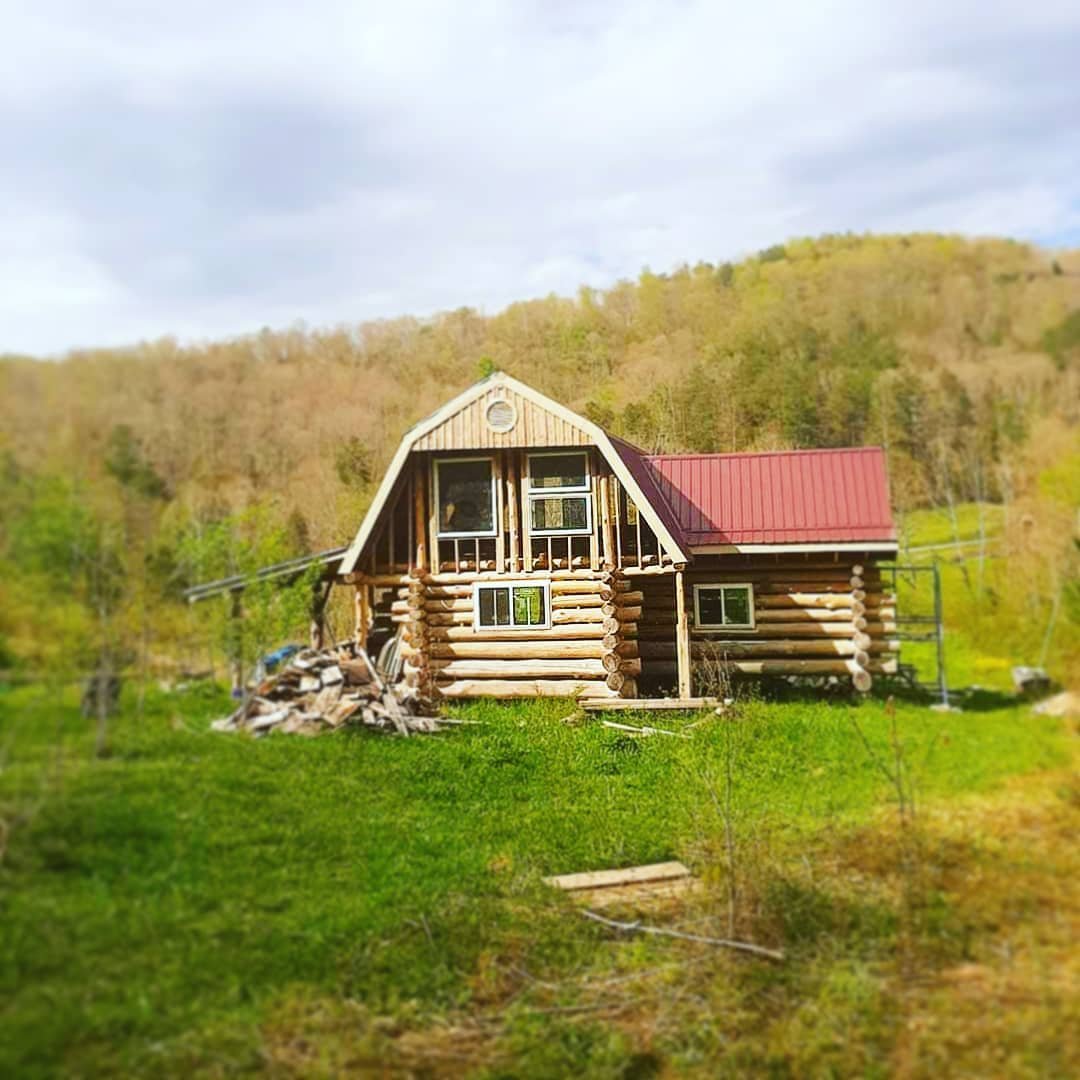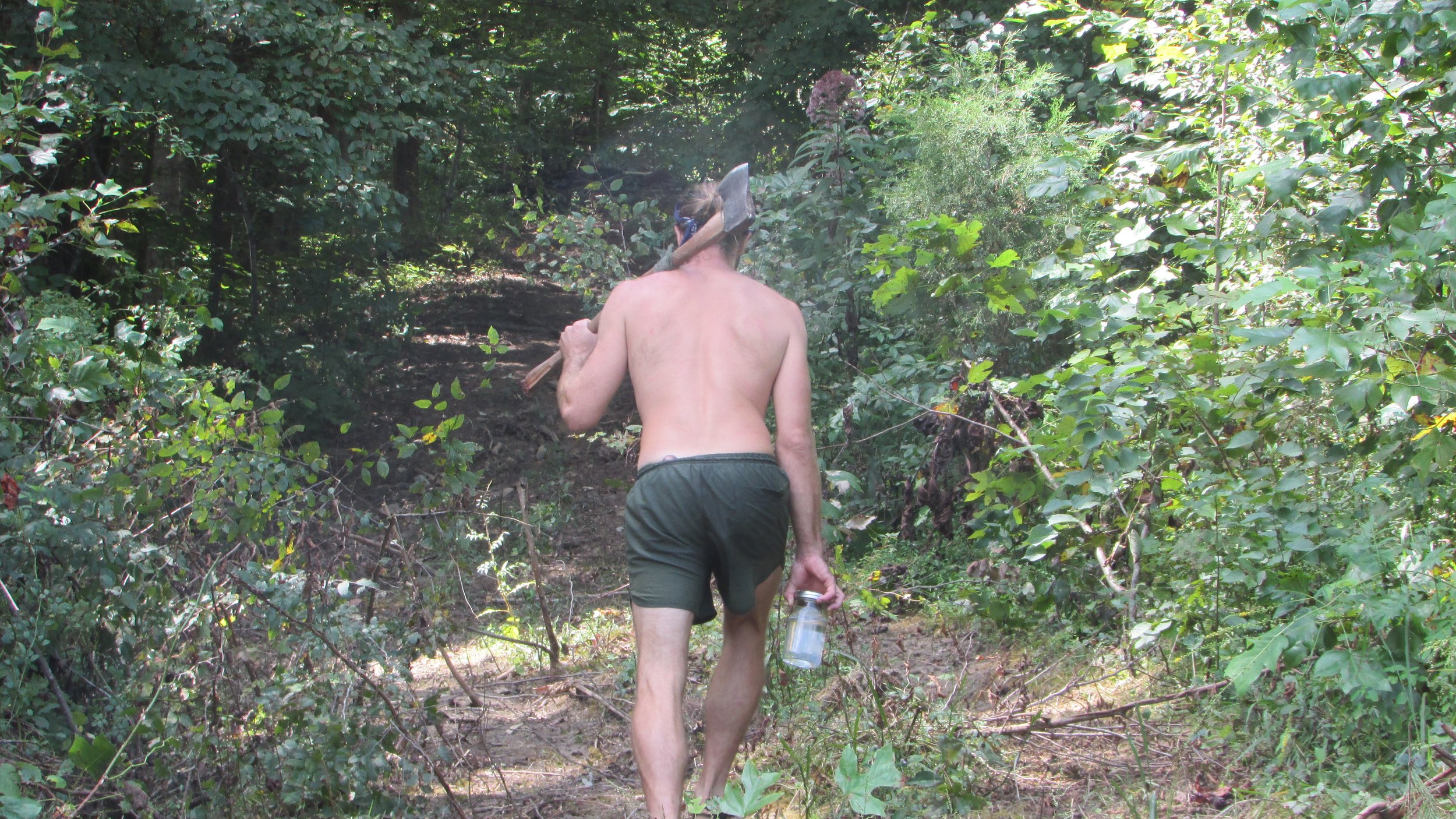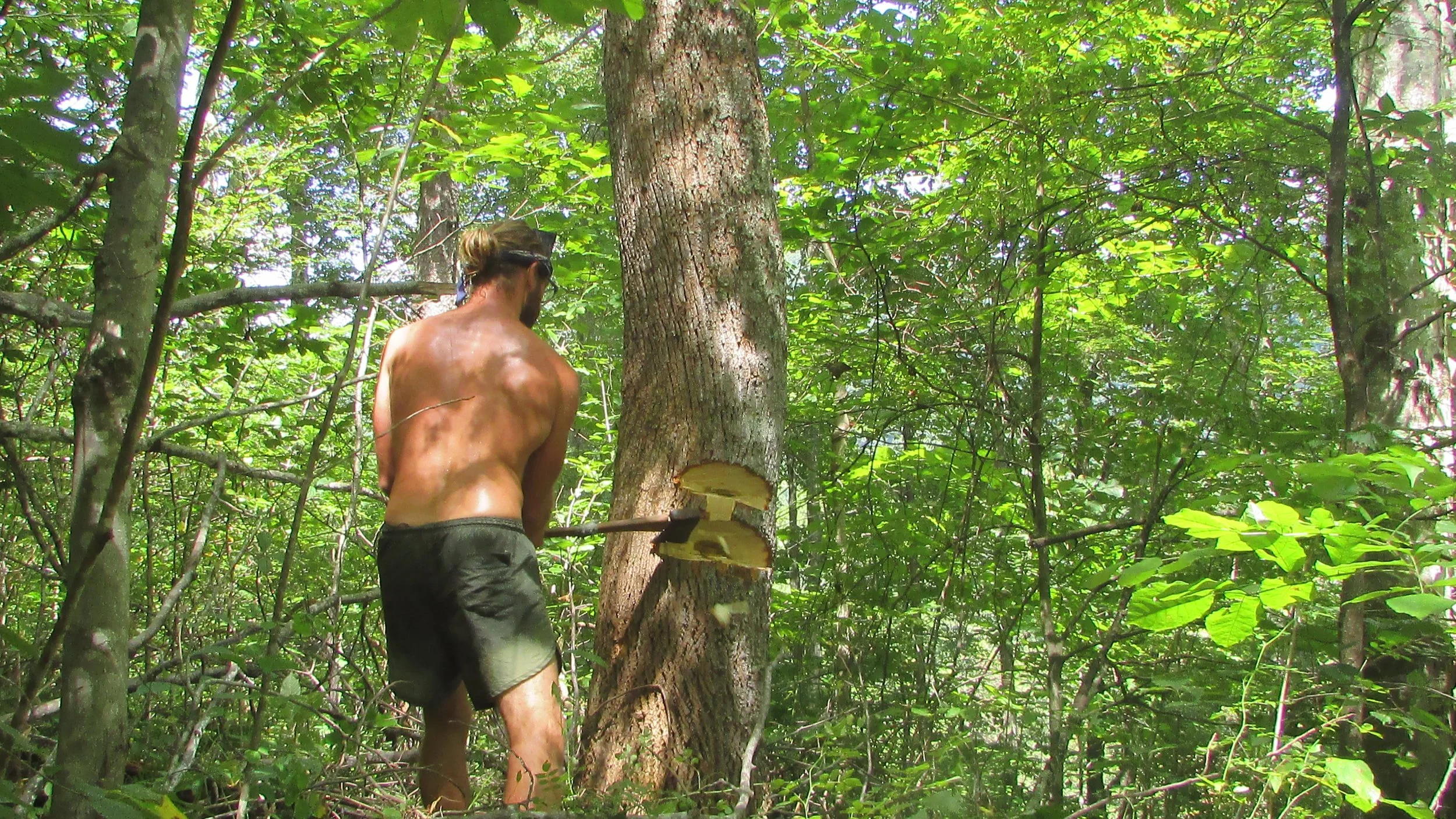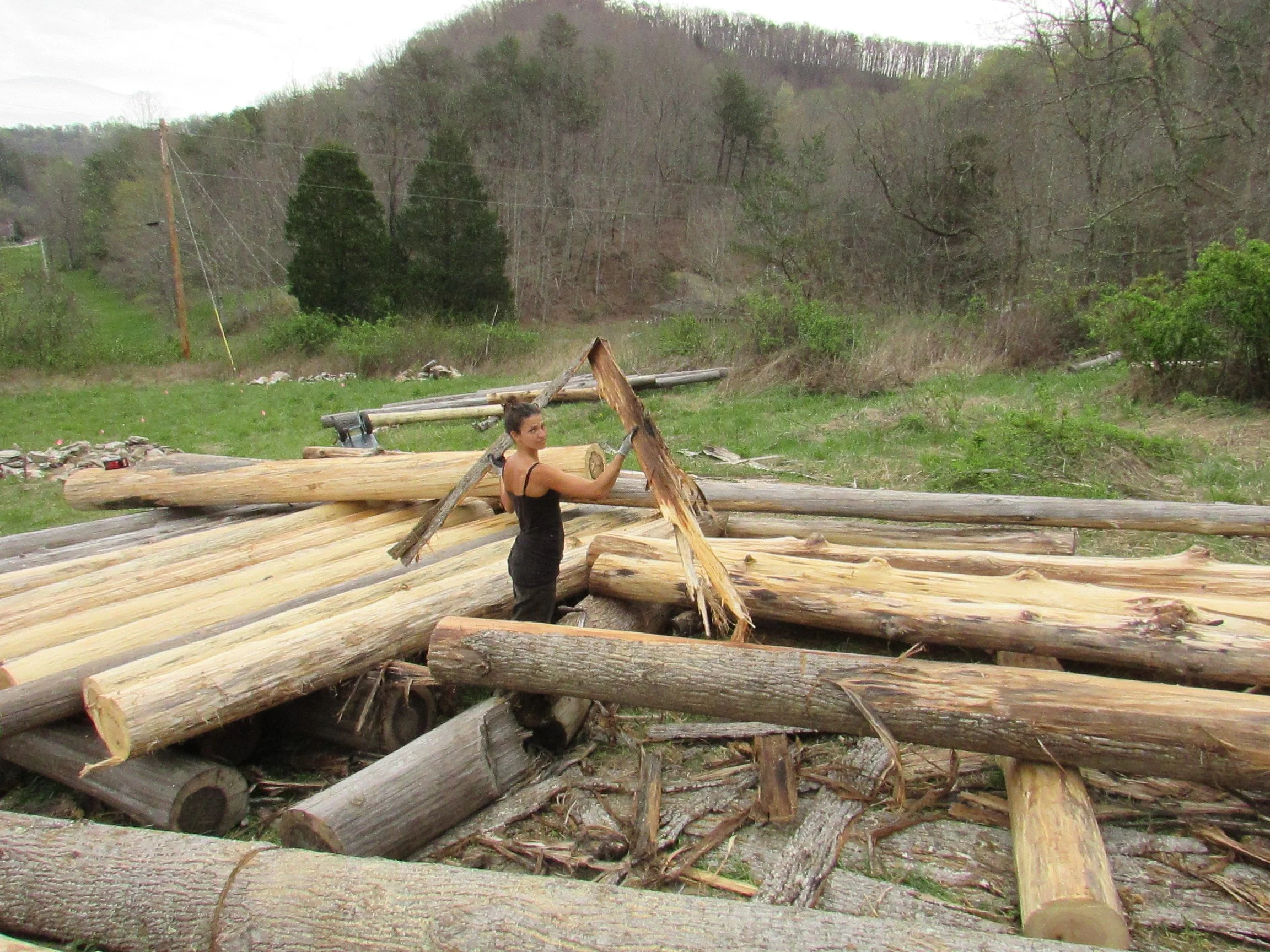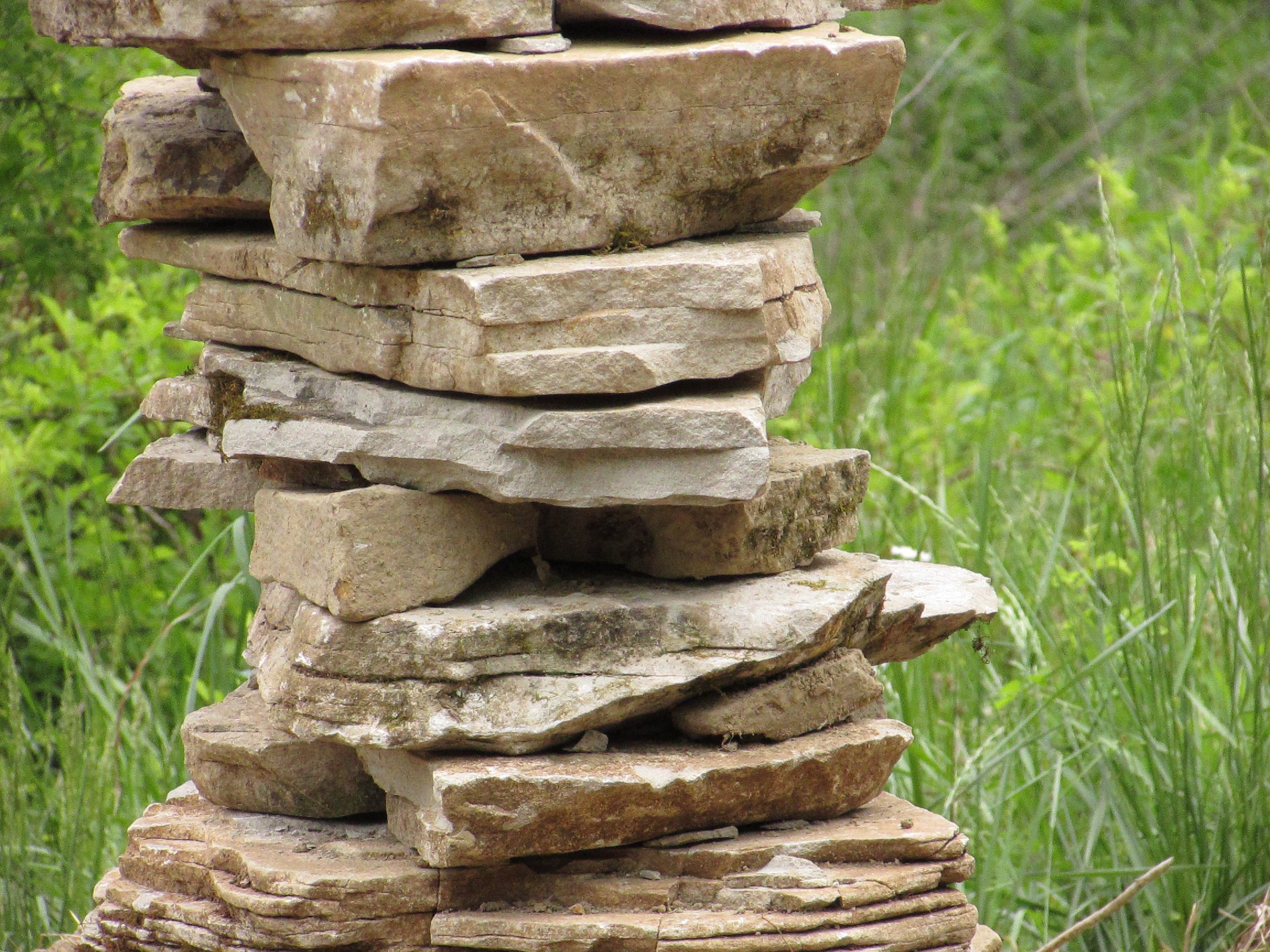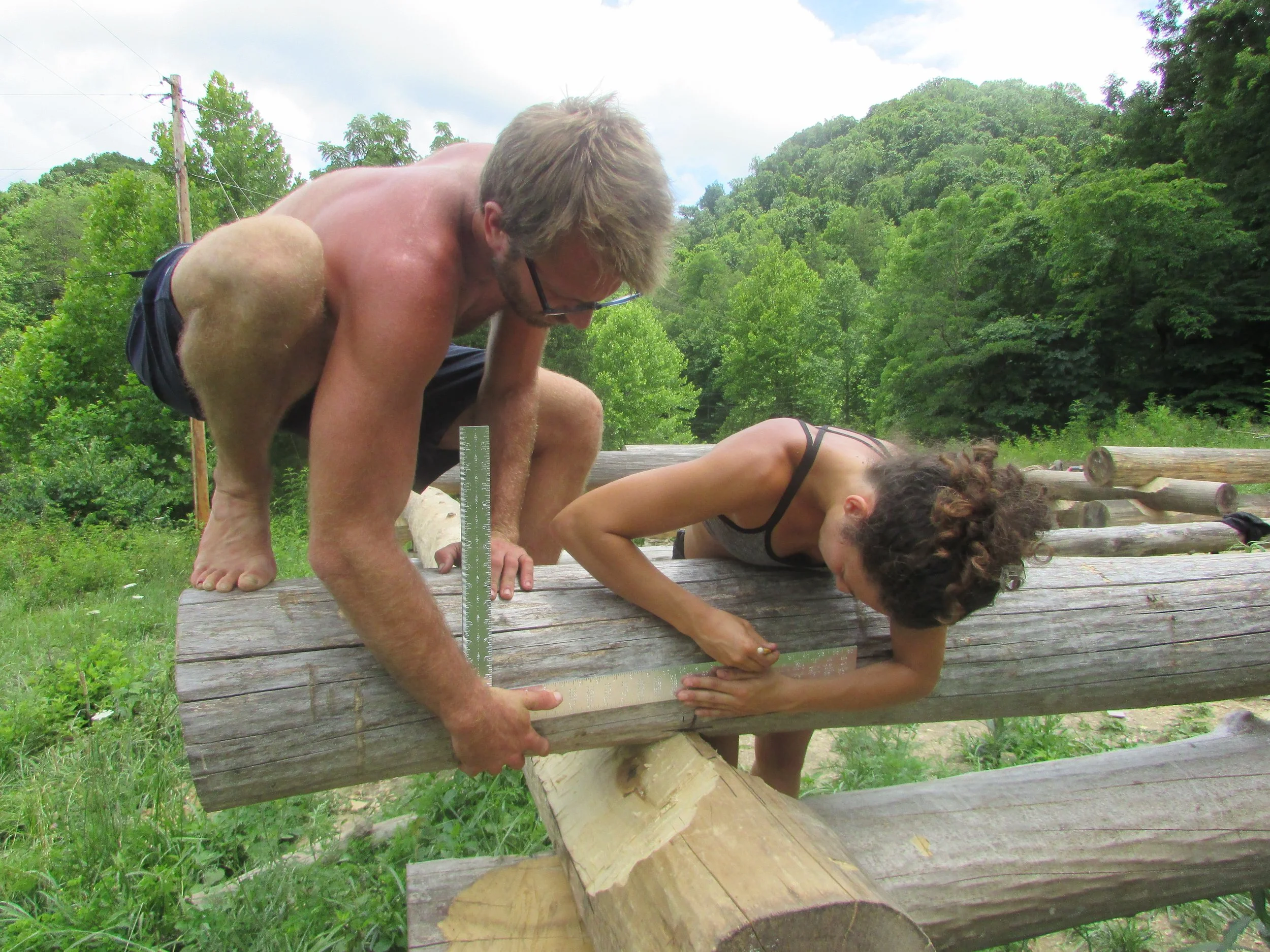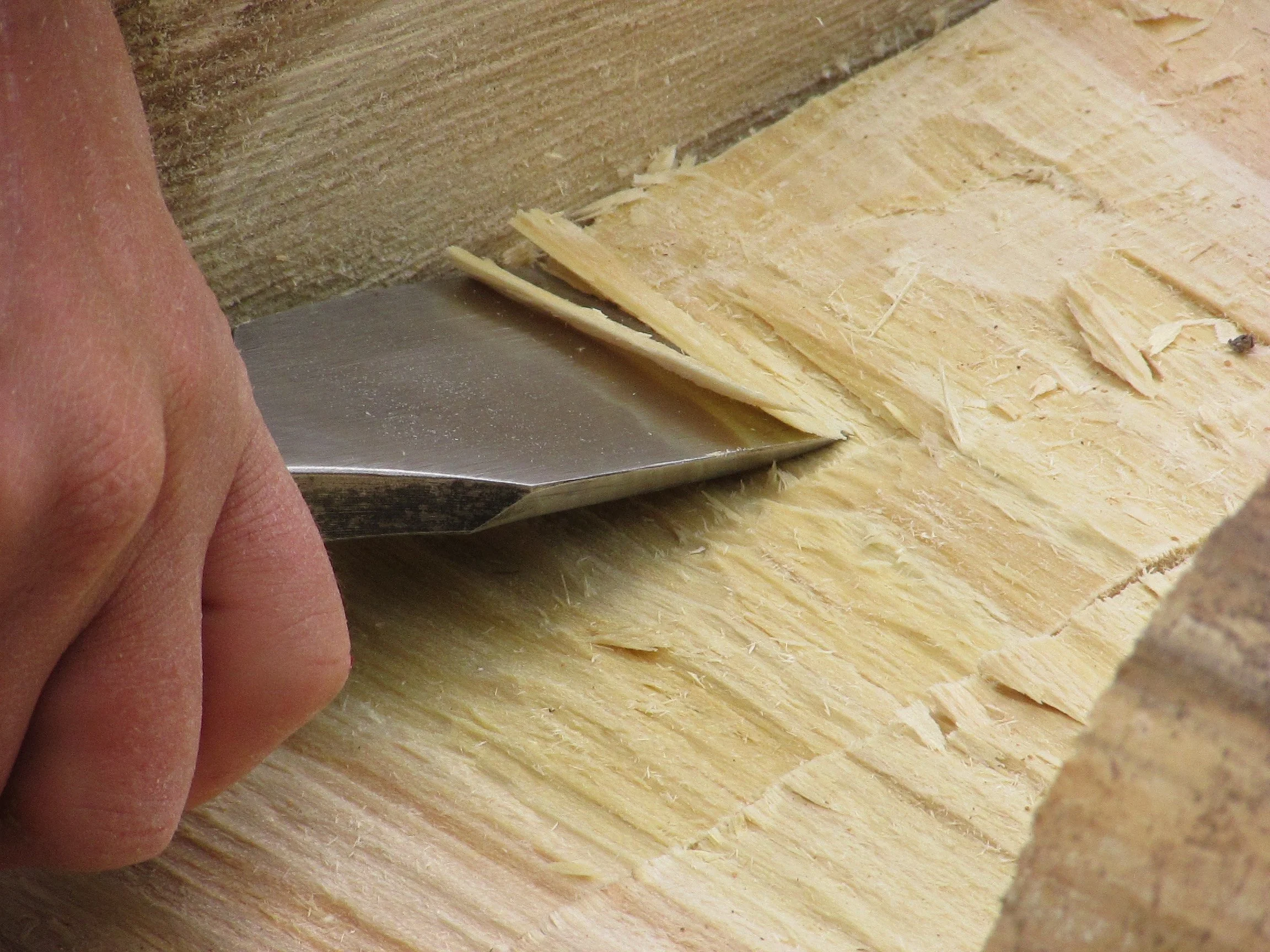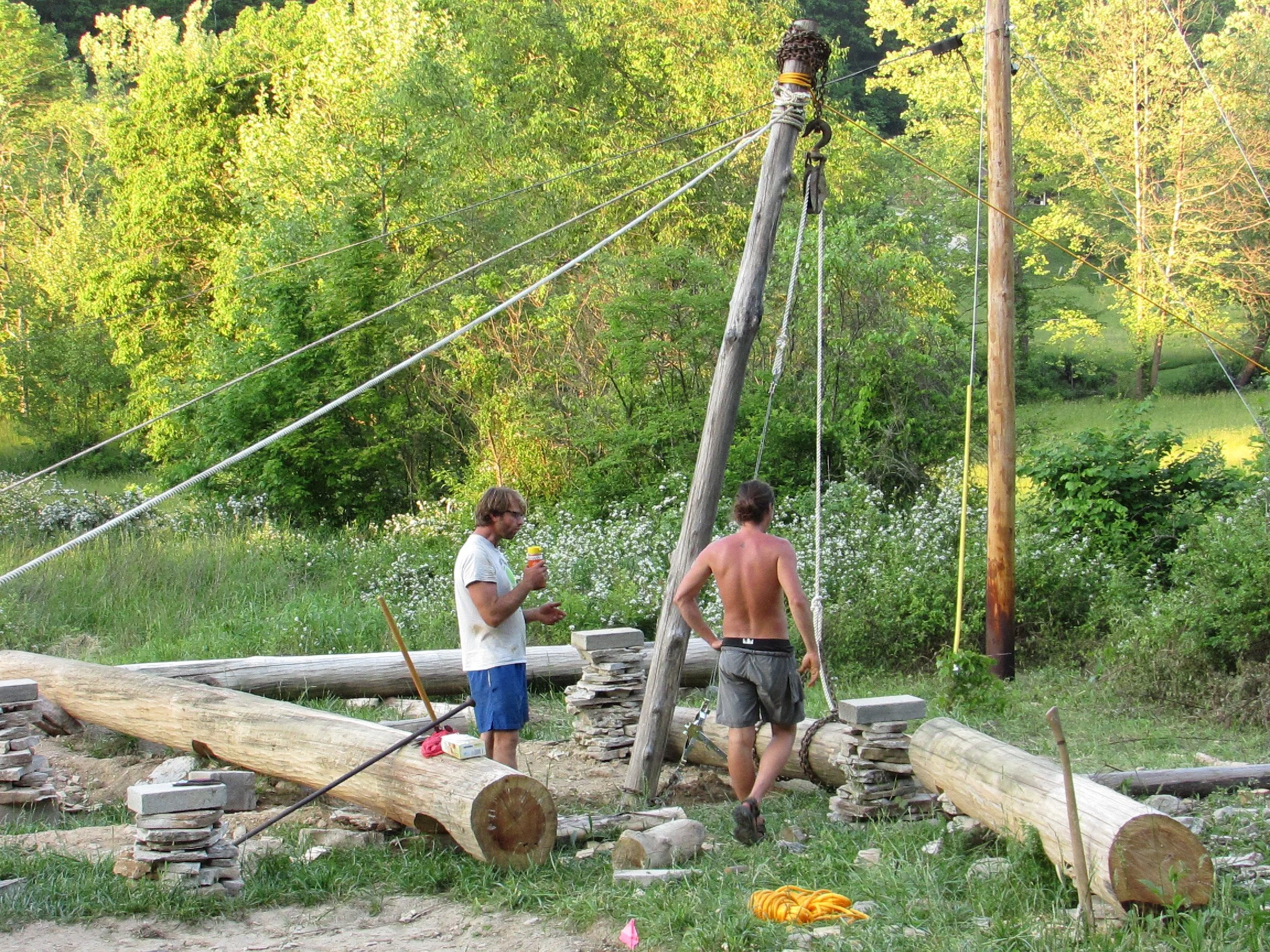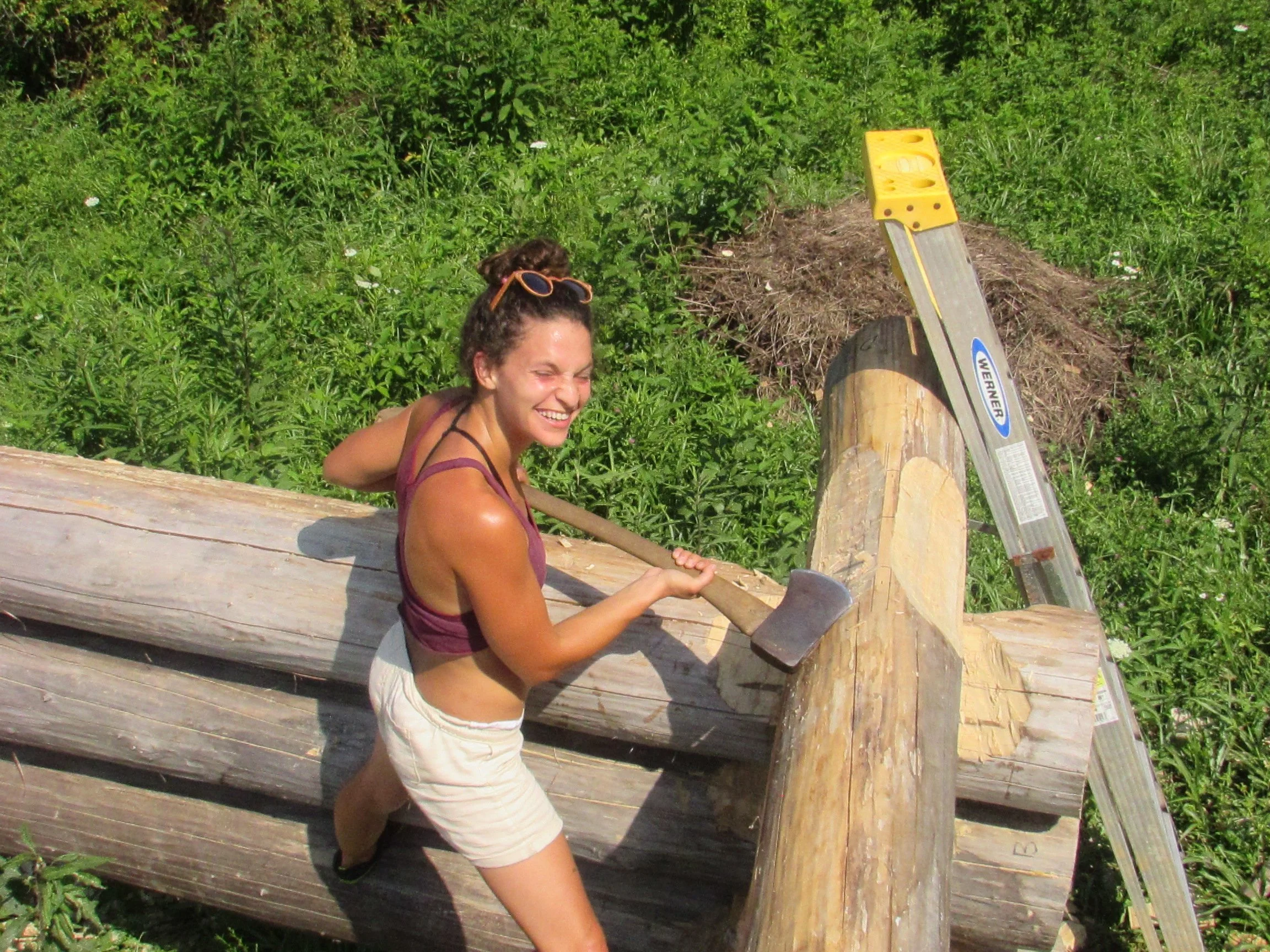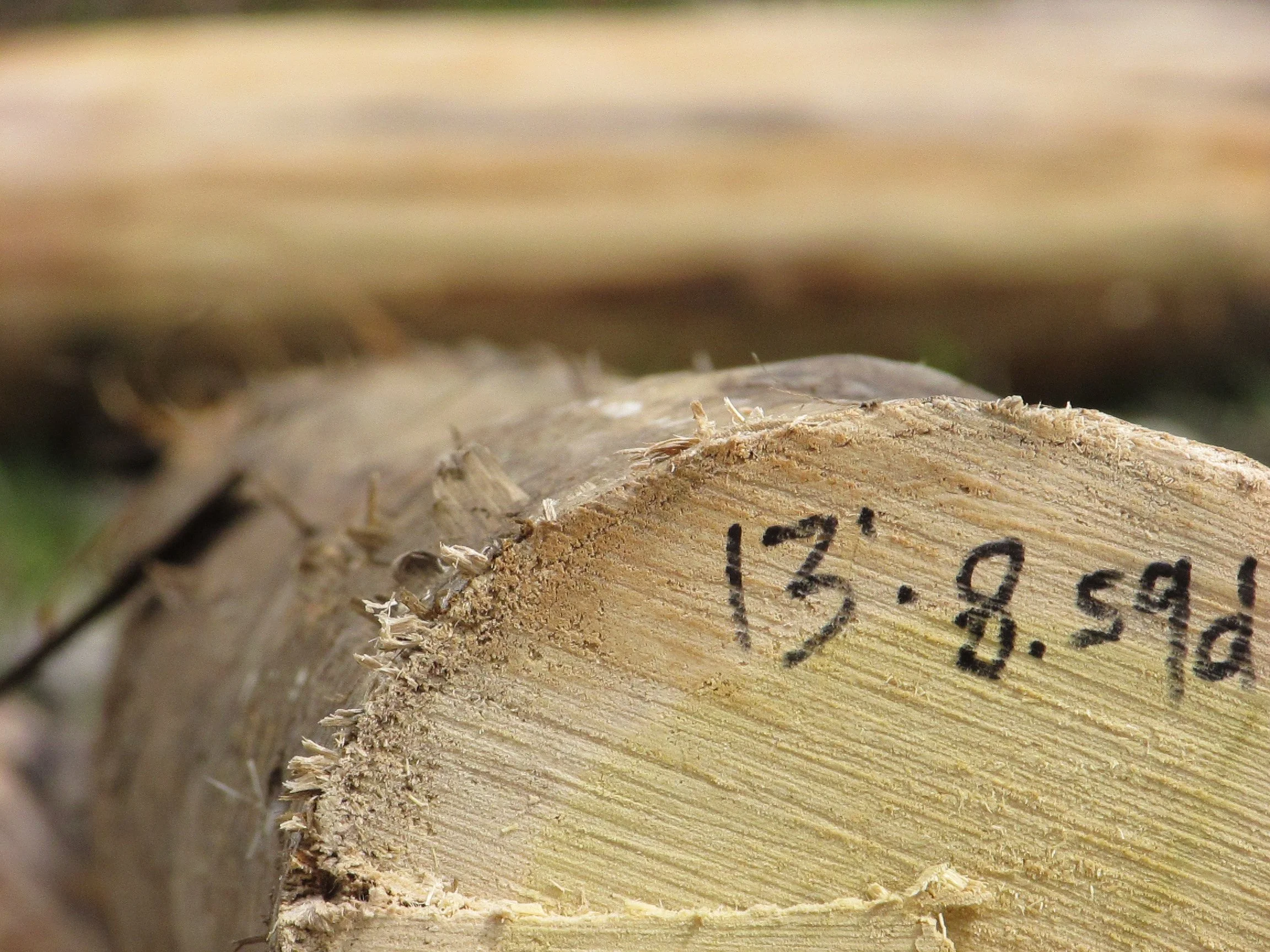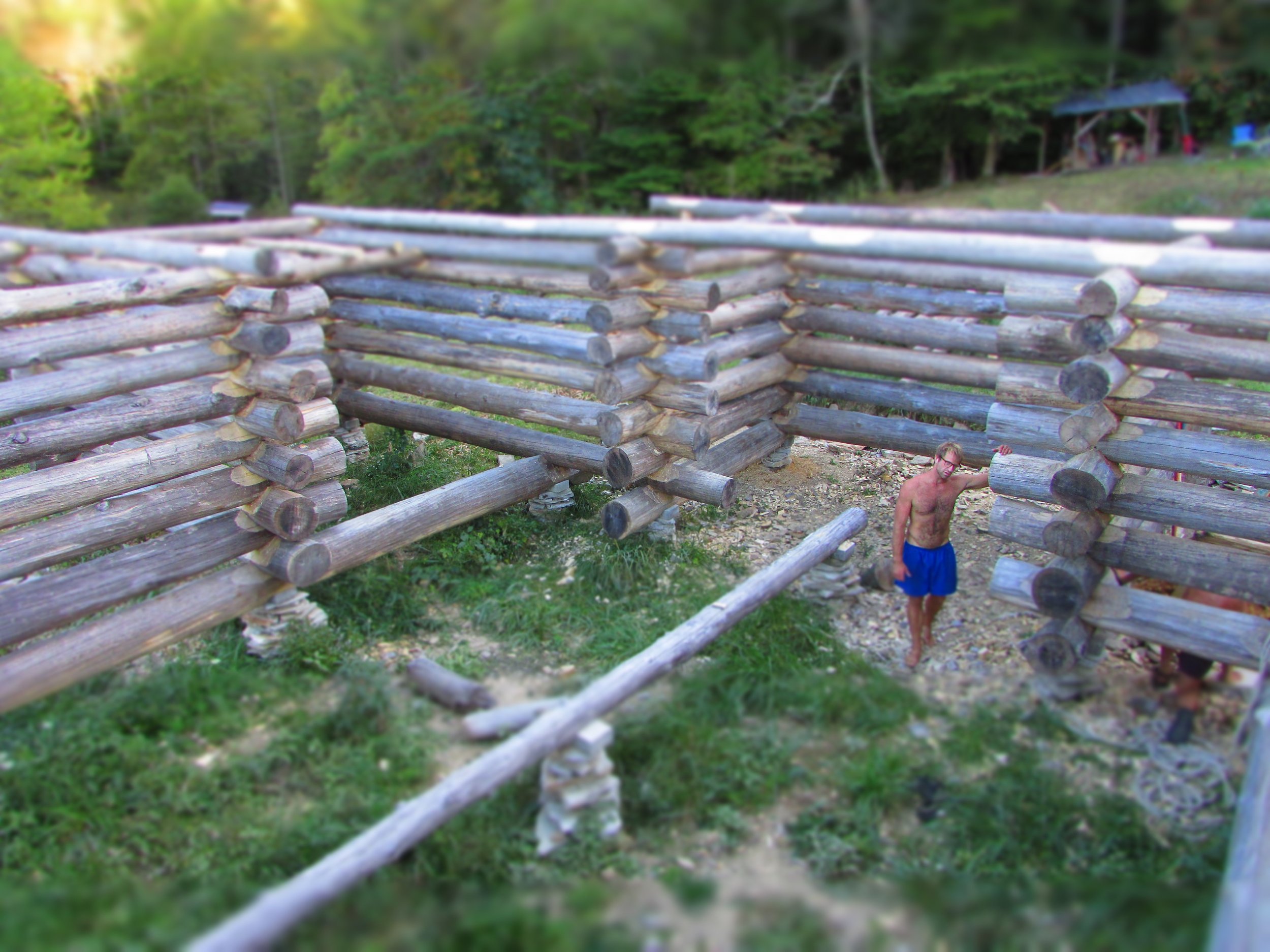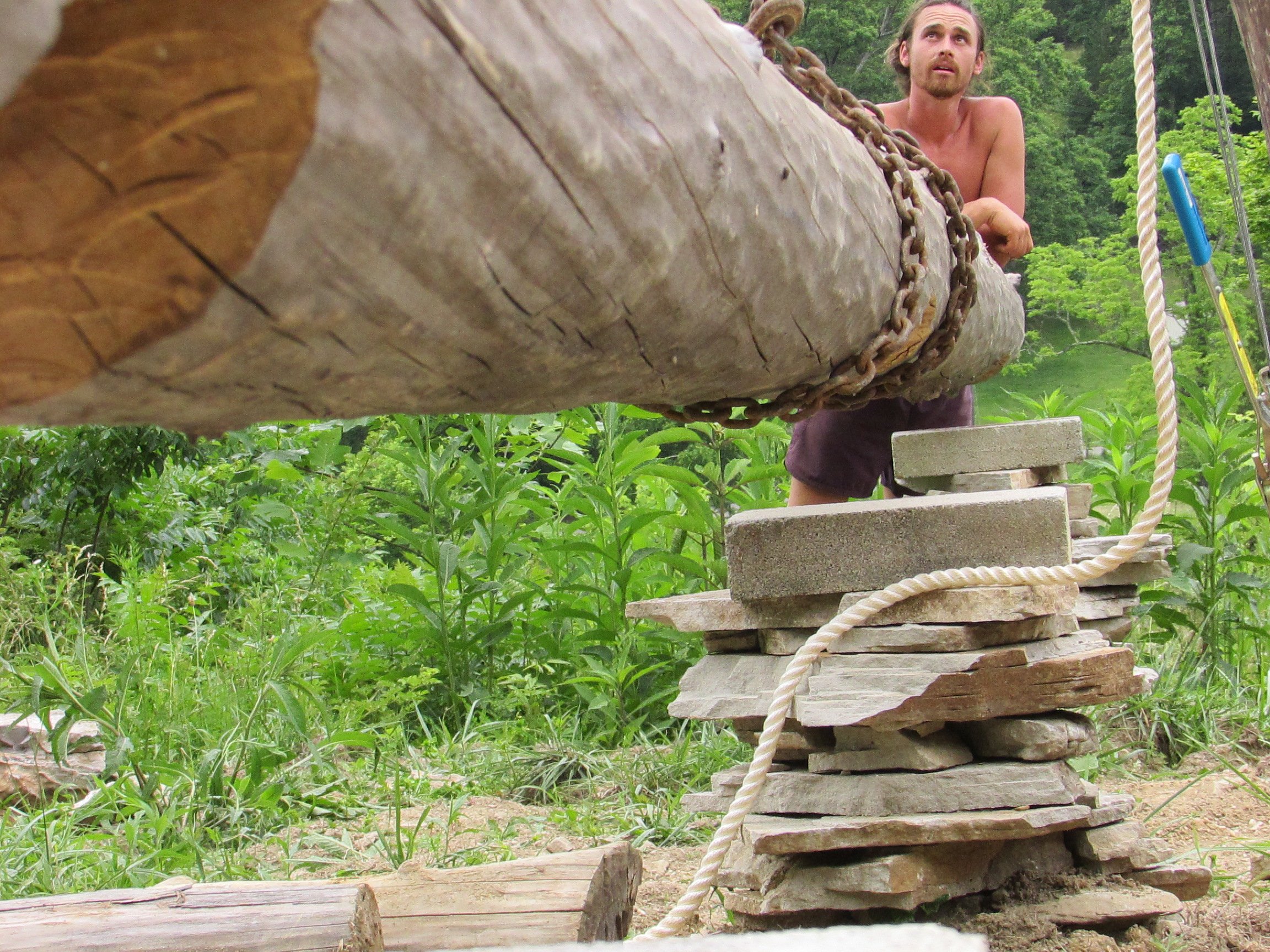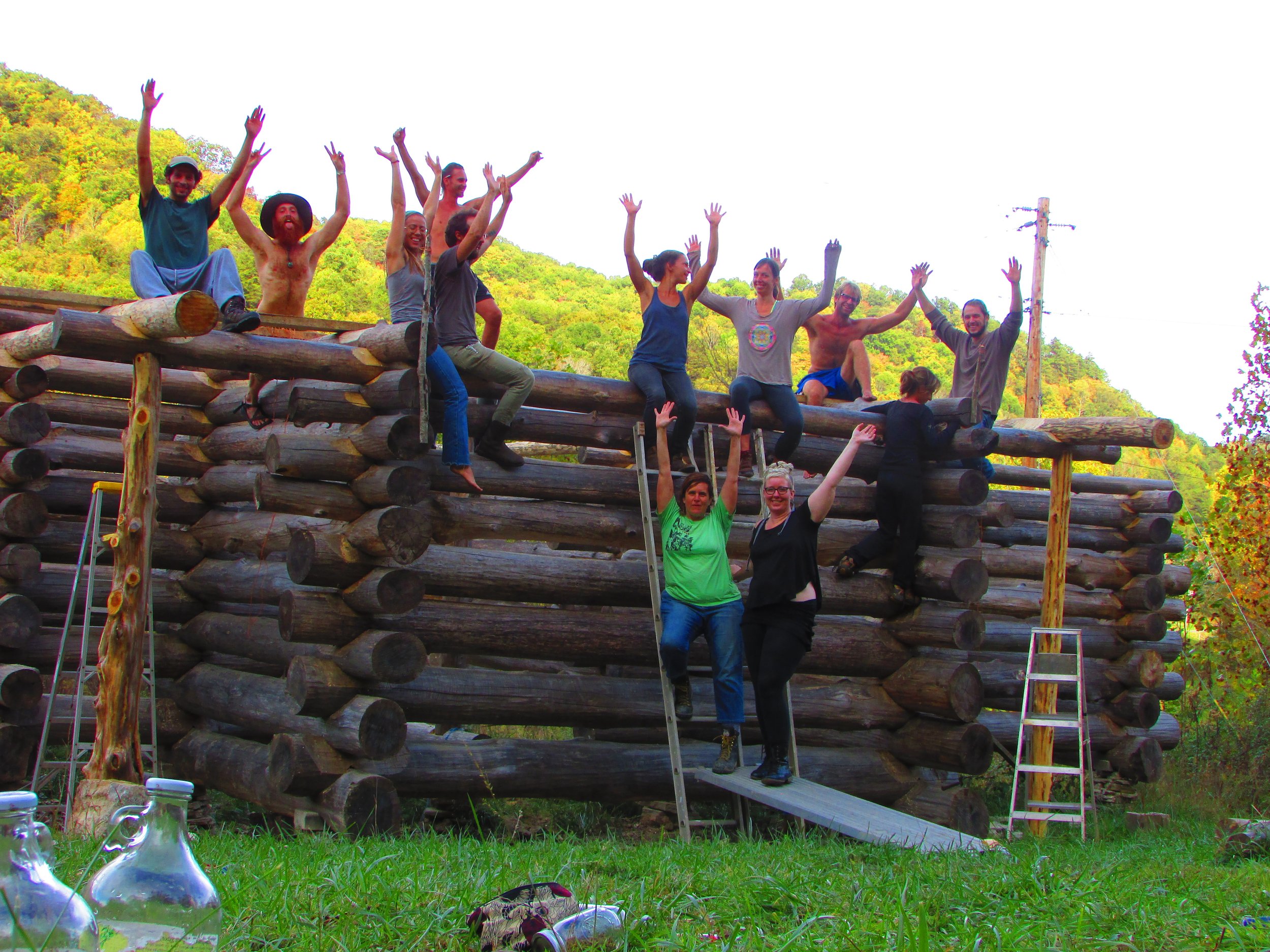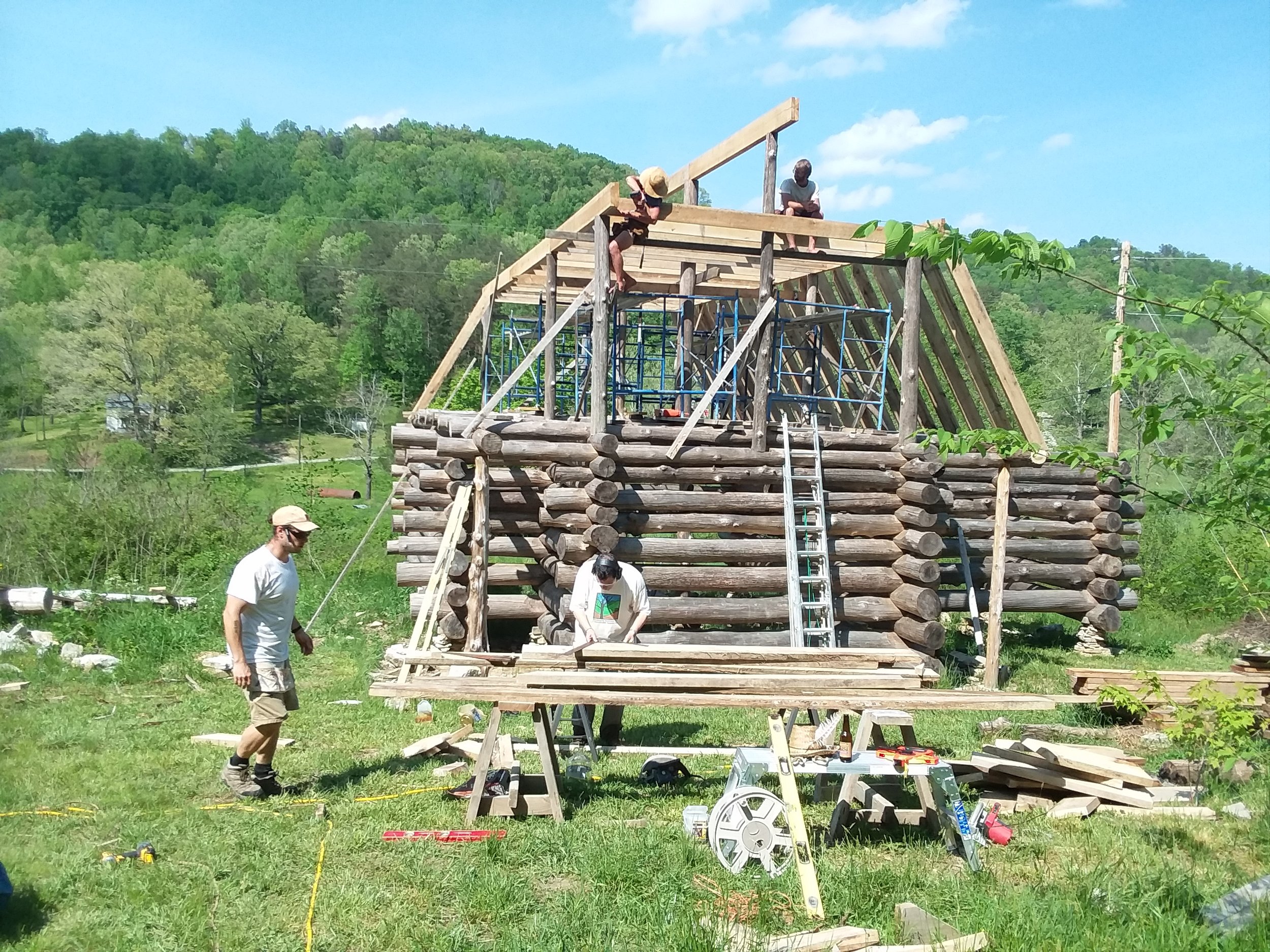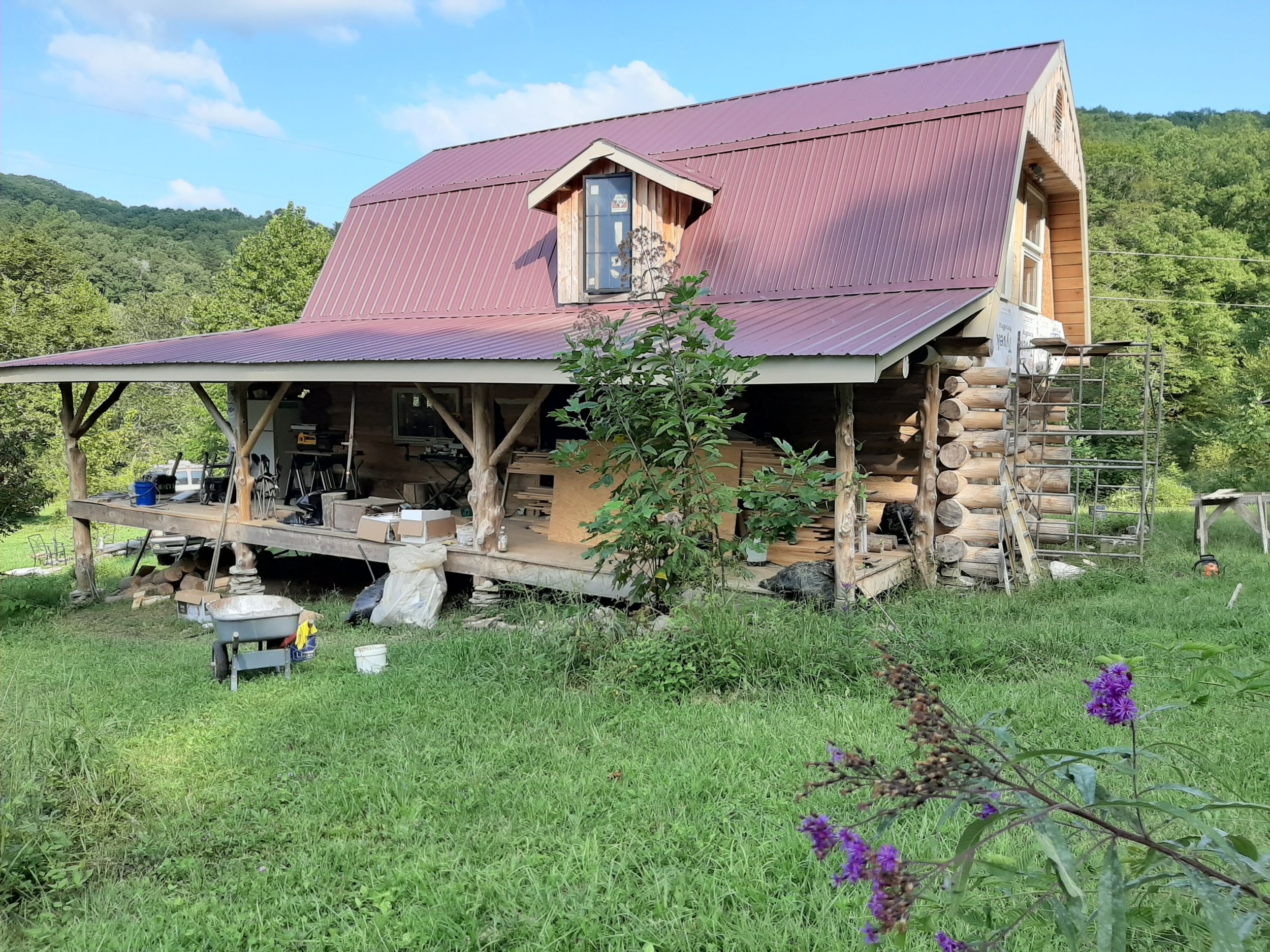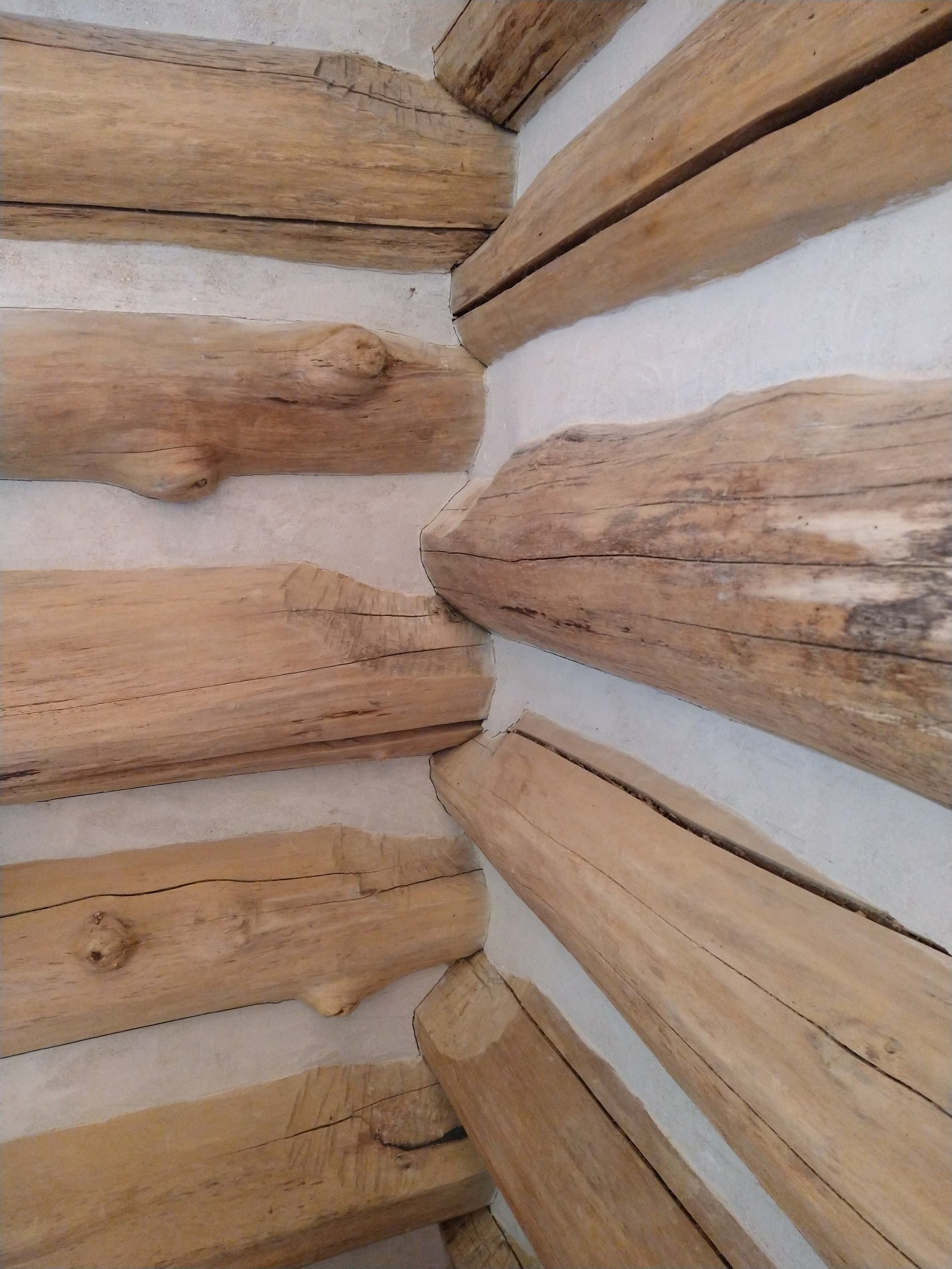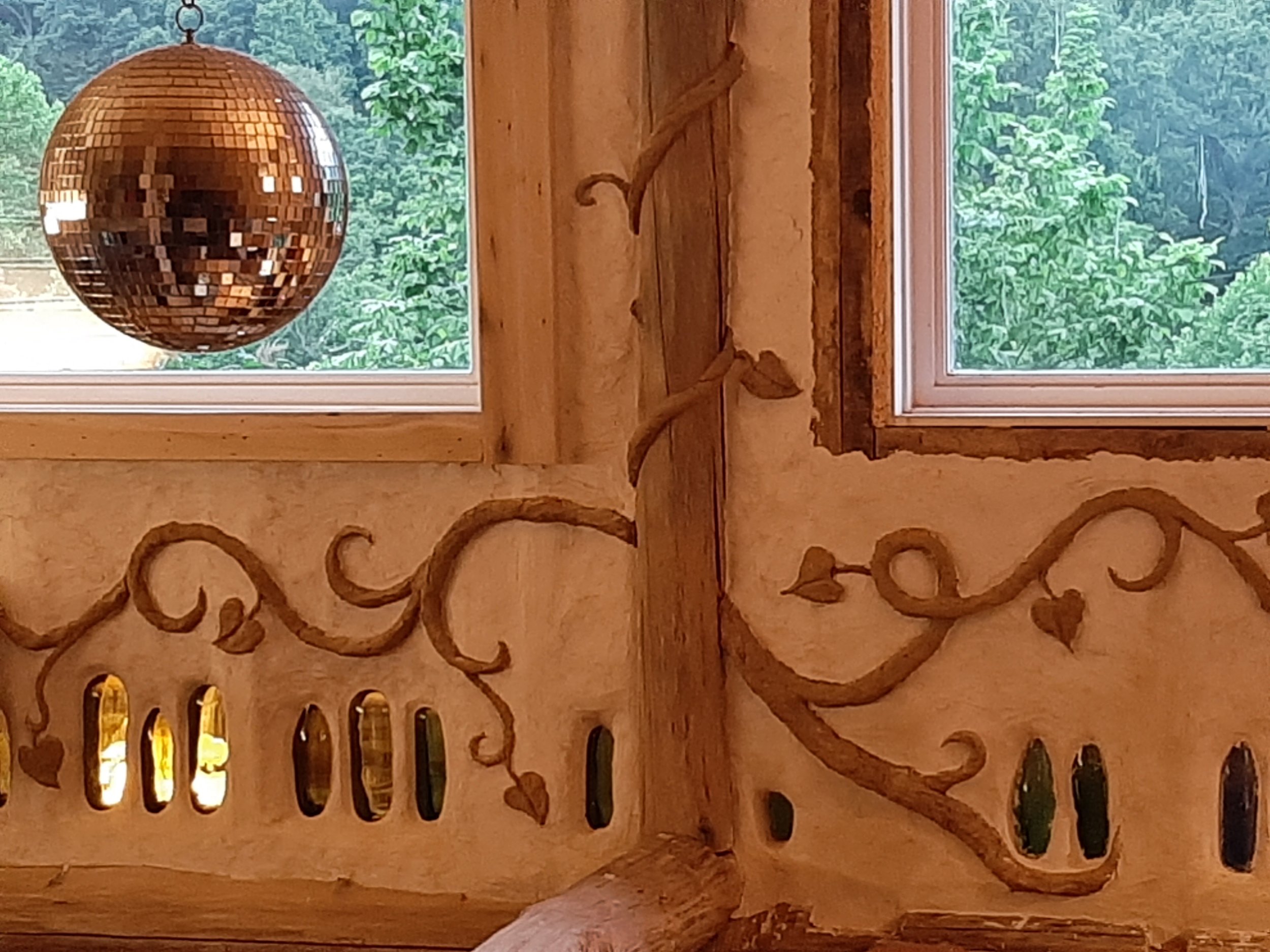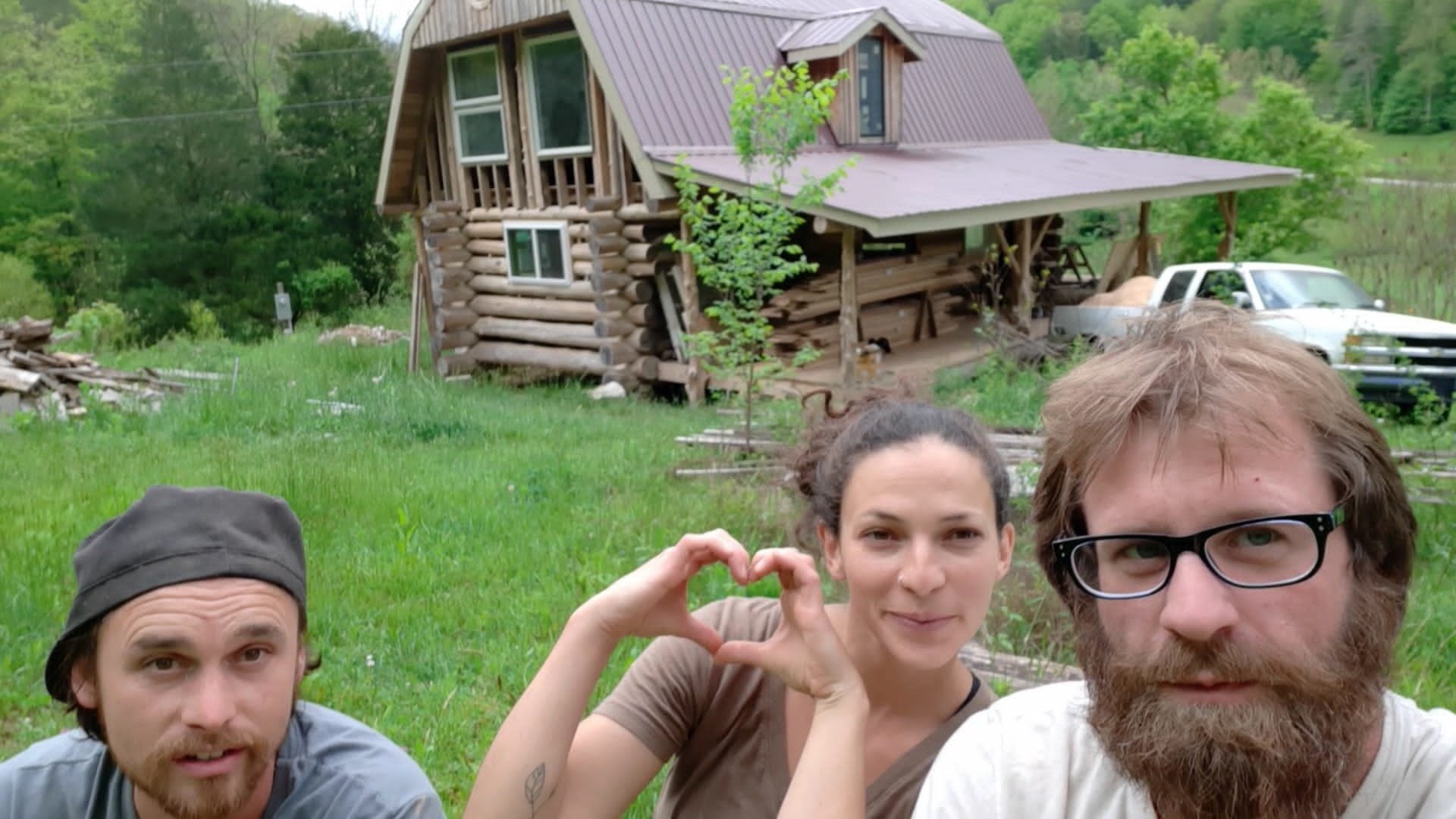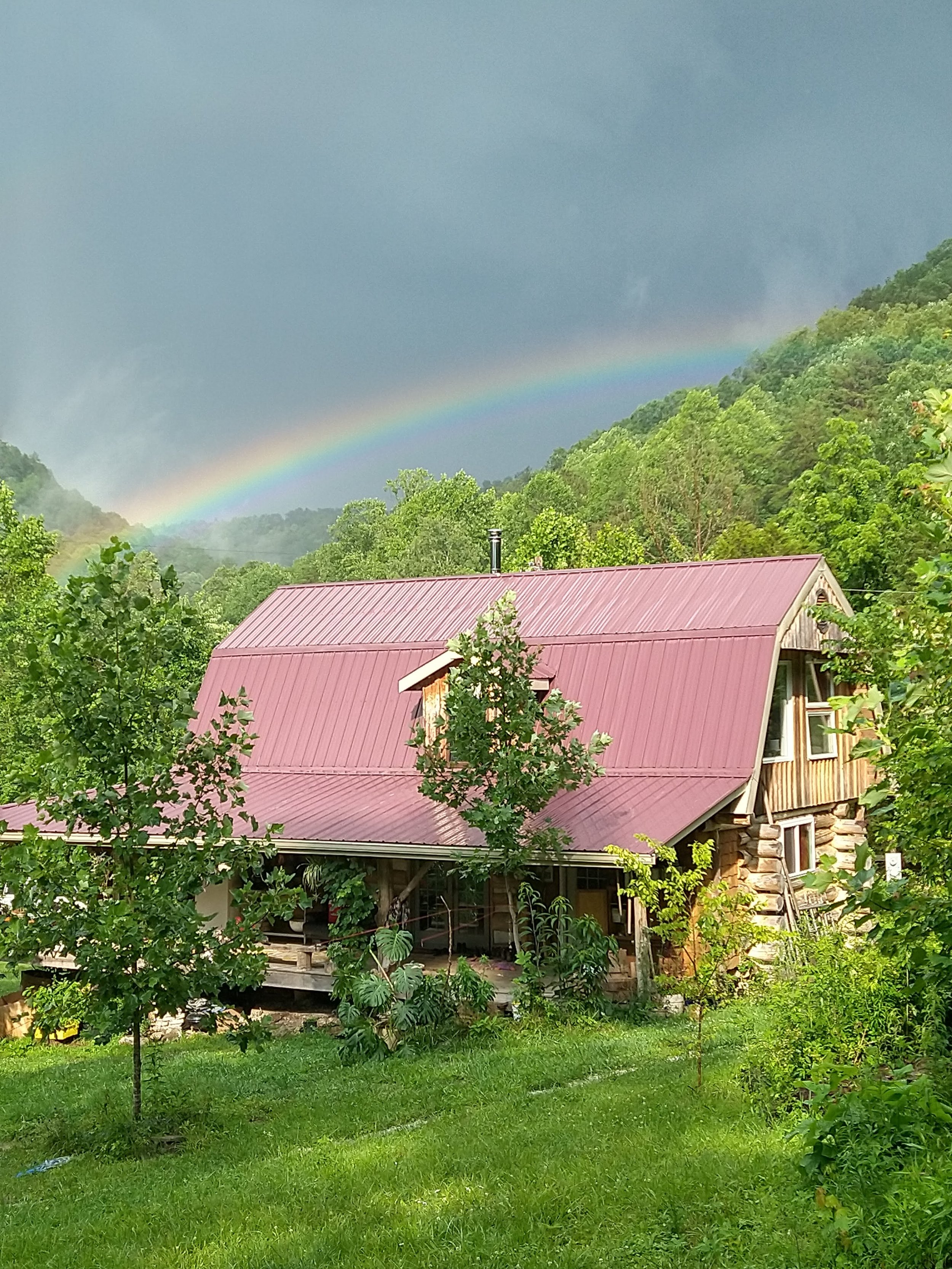Our hand built Log Home
In 2015, Loren, Michael and Joana decided to build a traditional log cabin. With no money, no jobs, very few resources and our passion for traditional building techniques we started talking with local old-timers and builders about the ways people have build log-homes for hundreds of years in the USA. All we had was hand-tools like the two-man saw, a sharp axe, some draw knifes and chisels and we were curious to build a home like they once did, not so long ago, actually.
Down the road from us is a great example of a log cabin built over 200 years ago that was moved to this valley by our neighbors at Seven Springs. It gave us great hopes when we realized that this house, like many others, was sitting on top of dry-stacked lime stone pillars and since we wanted to minimize the use of industrialized materials like cement, we got eager to start gathering stones for our foundation from the hilltop behind our house site. After one winter of getting really good at rolling stones downhill, we started digging 2ft deep holes where the pillars would sit. This is where the recommended frost line is in the state of Kentucky. Michael got really good at carefully stacking flat rocks with other rock shims to make the strong pillars where house sits on today. This was such a meticulous process, it required great amounts of patience and persistence.
Meanwhile we have been observing the forest and learning about the effects of the partial logging that occurred 15 years prior to us purchasing the land. What happened was that the larger, hardwood and slow growing trees were selected for their timber value and the forest was left with large gaps in the canopy. What happened next is what is called succession - meaning pioneers would now take over; smallish, more opportunistic and fast growing species like American Birch (Fagus sylvatica), Box Elder (Acer negundo) and Tulip Poplar (Liriodendron tulipifera) that rapidly occupied those gaps and spread densely throughout the forest, creating a dense shade that would slow down the growth of those slow-growing canopy species like the red and white Oaks, Maples and Hickories. Succession happens in the forest when disturbance occurs, (wildfires, tree fall, flooding). This is the way that nature recovers. By sending pioneer species to rapidly occupy the affected area, it ensures root systems to hold the earth and minimize erosion,. The fast growing trees are short-lived compared to larger trees, meaning they will decompose and contribute to soil building. All this happens so that the small sprouted acorn (or large trees) can have a place to root and ensure its survival through the long years it will take for it to reach the canopy and finally restore the mature forest system.
This is a slow-motion process that happens naturally, and us as humans can have an amazing impact in accelerating this process and helping the forest regenerate in less than half the time. This was our mindset when we went into the forest to harvest the timber for our house. We didn’t just want to go out and select the best trees for our use, so we asked ourselves: “How can we do this in a way that supports the regeneration of this disturbed forest while at the same time supporting our life here?
After careful observation of the forest we selected trees that were growing two leaders, too close together or cramping other, much slower, large canopy trees. The trees that were all hand-harvested using a very sharp axe, are tulip poplars, beautiful, native pioneer species that grow fast and straight with a soft hard-wood. Most of these trees sprouted back when cut down, which is an agroforestry technique called coppicing and is a practice used to accelerate succession. All the branches were laid on contour in the forest ground to serve as a debris catcher that overtime will decompose and create small terraces. This technique is also used to mitigate erosion. After opening space in the canopy, we planted larger, slow growing and ecologically valuable species all throughout the areas where we harvested timber.
After felling the trees, we literally rolled them downhill to the house site but for the ones that were a bit farther away, we asked our neighbor to bring his small tractor and help us out. Once the trees were down, we used a sharp draw-knife to peel all the bark off and pile them off the ground where they dried for 1-2 years.
As none of us were architects or engineers, it took many hours and days of ongoing conversation, dreaming, visualizing and designing and we constantly changed the design as we went and figured things out.
It was a long journey of 5 years before we moved into the house and I’m not gonna lie, it was the most challenging and empowering years of my life. There were many times where despair would creep in as we didn’t know if it would work at the end, after so much work in the heat of Kentucky summers where the bugs are thirsty for your sweat! But we kept going, despite the hardship of all the sweat, blood and tears and we finally moved in in June 2021. In the last year of building, Loren was diagnosed with cancer and as he needed to take care of his health, Michael and I continued to push on the house in hopes to finish it faster so that we could move in. We hired friends to help us with electric and plumbing and some other finishing touches.
Loren passed away in January 2022, he only got to live in the house we built for 3 months but I am happy he at least got to sleep in it and appreciate all the hard work we did. This house will forever be a shrine to our brother and best friend Loren Heacock, his energy is in every log, every nail and every angle of this home. We miss you.

